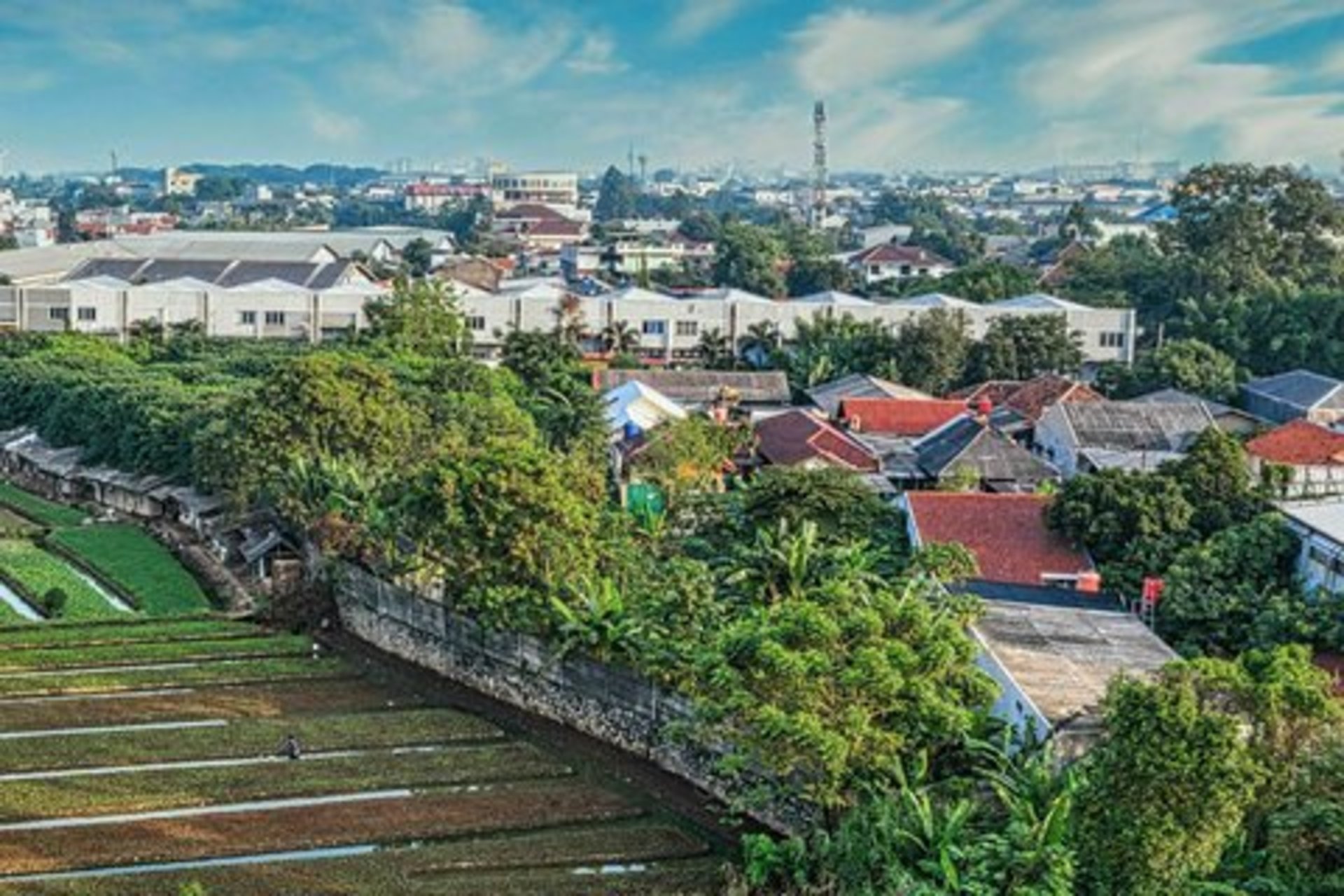Stanford Celebrates Earth Day
The Stanford Woods Institute for the Environment launched Stanford’s Earth Week festivities celebrating the 50th anniversary of Earth Day with a virtual event focused on the next 50 years of environmental innovation and leadership.
The Stanford Woods Institute for the Environment launched Stanford’s Earth Week festivities celebrating the 50th anniversary of Earth Day with a virtual event focused on the next 50 years of environmental innovation and leadership.
Streamed online, Earth Day Future 50, featured a multi-generational group of Stanford alumni who are leaders in the fields of environment and energy sustainability science, engineering, policy, and advocacy. The event highlighted both how far we have come on addressing pressing environmental challenges and how far we have yet to go.
“Fifty years after the first Earth Day, Stanford is committed to ensuring a sustainable future,” said Stanford President Marc Tessier-Lavigne. He detailed some of the major contributions Stanford is making to further a sustainability and environmental progress, including achieving a more sustainable campus, the work of the Natural Capital Project, the Center for Ocean Solutions, and other initiatives, and the launch of a sustainability accelerator. Tessier-Lavigne also reflected on how the COVID-19 pandemic has affected his understanding of the importance of a sustainable environment. “One thing that has struck me is how being quarantined is changing my relationship with nature. It’s really reinforced my gratitude for the natural world as a source of calm and a place for deep thinking.”
Stanford experts reflect on five decades of environmental progress. Read more.
Woods Director Chris Field, Ph.D. ’81, opened the event explaining how the COVID-19 pandemic, much like climate change and other pressing environmental challenges, emphasizes “the value of incorporating science and expertise in building strong policy, including a strong commitment to investing in preparation before we encounter a looming disaster.”
“Ultimately I’m of the belief that having dawdled now for too many decades and having produced some brilliant studies and powerful conferences but not very much action (we still produce more carbon dioxide every year than the year before), we’ve now gotten to the point where we’ve got to take some very bold actions and that will happen only if we have a huge base of support and the public begins to demand it,” said Denis Hayes, ’69 J.D. ’85, who organized the first earth day in 1970 and joined Field for a pre-recorded conversation. Hayes discussed his experience during the first earth day and how he views the interconnectedness of people and environmental problems. “I realized the fundamental truth that humans are animals and that all animals need to be paying attention to the basic principles of ecology.”
Focusing on the future, a panel of young environmental and energy leaders discussed various mechanisms for positive change in the environment and energy space.
“We really see that the climate space is a tremendous opportunity for continued growth and that’s something that we’re talking about as we reflect on 50 years of Earth Day and looking forward,” said Ken Alston, M.B.A and M.S. ’12, Director of Mobility and Energy Storage, New Energy Nexus and CalCEF Ventures. Alston explained that various types of capital were needed to support clean technologies and many innovations were aided by investments made by the federal government, national labs, and universities.
“We can establish policies to seed markets, help scale new technologies that allow for further breakthroughs, and help us push policy further,” said Terra Weeks, M.S. ’17, Senior Advisor to California Energy Commission Chair David Hochschild, explaining how the Commission cultivates a clean tech ecosystem. “So we iterate through that cycle over and over, which has allowed us to increase our renewable portfolio standard from 20 percent to now 100 percent out in 2045.”
Molly Morse, M.S. ’04 Ph.D. ’09, Chief Executive Officer of Mango Materials, a San Francisco-based startup company that uses methane to manufacture biodegradable materials that serve as a low-cost substitute for plastic, explained how Stanford and the Bay Area were uniquely enabling. “The basic foundational technology and scientific inspiration for Mango Materials was actually part of my Ph.D. work at Stanford University. It came out of the labs of Sarah Billington and Craig Criddle in Civil and Environmental Engineering. And I can guarantee that this would not have happened somewhere else and our company wouldn’t have gotten off the ground if we were in a different location.”
“I think we’re all working towards thinking about what are the solutions we’re going to need to meet a net-zero target in 2050, and there are technologies that are not yet feasible today but they may be feasible down the road and so that’s really the type of thinking we need, a multi-decade approach,” said Alston.
The event also featured a discussion between Perry McCarty, the Silas H. Palmer Professor, Emeritus, in Civil and Environmental Engineering and one of the founders of environmental engineering, and Olivia Ames, ’21, an undergraduate at Stanford focused on sustainable agriculture and environmental justice and an environmental communications intern at the Woods Institute. McCarty was a professor at Stanford during the first Earth Day at Stanford in 1970.
“Earth Day in 1970 was a response to the Vietnam War crisis that students were protesting all over the country. It was a glorious coming together of students of all disciplines. Something was uniting us rather than dividing us,” said McCarty.
He listed some of the major environmental issues raising public awareness leading up to Earth Day, including pollution of drinking water, smog and air pollution from motor vehicles, and chemicals in groundwater, and described many of the solutions to these problems that have been developed over the last 50 years.
McCarty asked students and those in attendance to remember the words of biologist Rene Dubos and “Think globally, act locally.” “When you talk about what should everybody do, it’s not just the scientists and the engineers, but everybody seeing an environmental problem and thinking what can I do about this locally?”
The event also featured a video(link is external) of Stanford students and faculty reflecting on Earth Day in light of the global pandemic and closed with reflections from the audience, including quotes, haikus and poems as well as photos of nature, children, and wildlife, on what Earth Day means to them and what hopes they have for the next 50 years.
“We are one planet and we’ve got to address these things as a planet,” said Hayes.
This event was the first of several events planned over Earth Week, including a virtual panel on climate resiliency, film screening, virtual lab tours, and more.
Thank you to everyone who joined us on April 20, 2020 for our virtual event, Earth Day Future 50: A Celebration.
Explore More
-
Gabrielle Wong-Parodi and Jim Leape are leading an initiative to launch the planned Sustainable Societies Institute by the end of 2024.
-
Stanford economist Paul Milgrom won a Nobel Prize in part for his role in enabling today’s mobile world. Now he’s tackling a different 21st century challenge: water scarcity.




